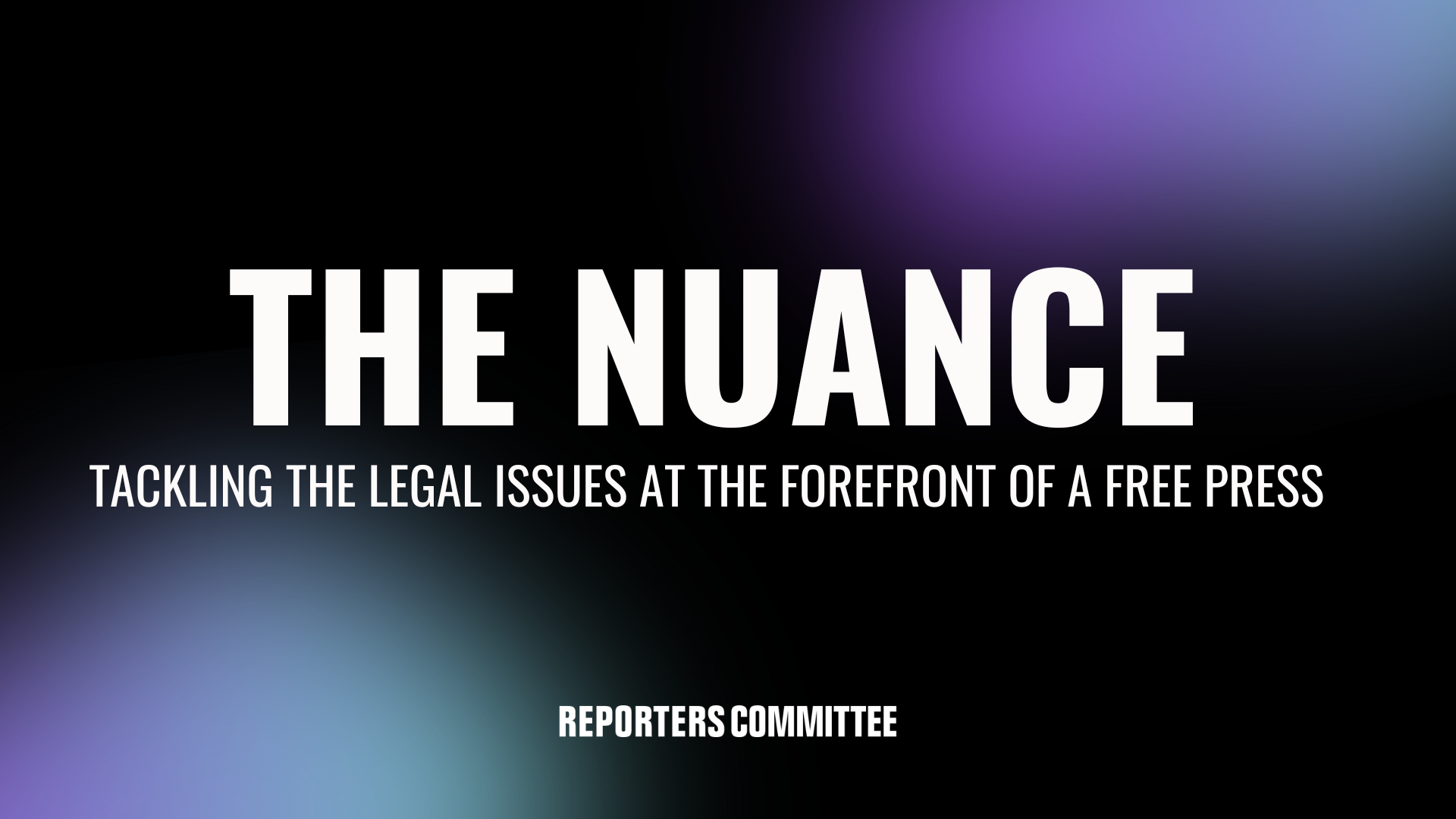Why the First Amendment protects social media content moderation

If you like this post, sign up to get The Nuance newsletter delivered straight to your inbox every Sunday night!
Last Tuesday, the Reporters Committee for Freedom of the Press, the American Civil Liberties Union, and several media trade groups representing the movie, video game, bookselling, and music streaming industries submitted a friend-of-the-court brief to the U.S. Supreme Court in NetChoice v. Paxton and NetChoice v. Moody, two cases challenging attempts by Texas and Florida to regulate how social media platforms engage in content moderation.
As any regular reader of this newsletter knows, we have discussed these cases a lot — for years. We’ve submitted friend-of-the-court briefs every chance we’ve had to do so on the merits, so this one is kind of the end of an era for our team. It’s also the culmination of a lot of effort and advocacy. So this week, we thought we’d share a bit about why the First Amendment protects content moderation on social media, and why we care.
In Miami Herald Publishing Company v. Tornillo, a unanimous opinion from 1974, the Supreme Court struck down a “right-of-reply” law in Florida, which required newspapers printing criticism of people running for office to give the subject of the criticism an opportunity to print a response of equal length. Although it had been on the books for many decades, it had never been used until Pat Tornillo, a teacher’s union leader, sought to force the Miami Herald to print his response to its editorial opposing his candidacy for a seat in the Florida House of Representatives. The Herald refused, and Tornillo sued. The case made it all the way up to the Supreme Court, which determined that the Florida right-of-reply law violated the First Amendment since it interfered with newspaper editors’ right to choose what to print, when, and where.
In our brief, we argue that, by this logic, the First Amendment likewise protects a social media platform’s editorial decisions about how to display third-party content and what kind of content to allow on its site. This is true even though social media platforms are less discerning about the content they decide to host than a newspaper. The extent to which an editorial decision is protected by the First Amendment does not depend on the discernment of the editor. Rather, it depends on whether the function is indeed an editorial one. Bookstores, museums, theaters, art galleries, and concert halls all require some level of editorial choice. Decisions about which of Picasso’s many paintings to display and in what order are protected for the same reason as decisions about which of YouTube’s many puppy videos to display on your newsletter author’s homepage.
So when a government tries to weigh in and influence either decision, it sounds our First Amendment alarm bells. In the laws being challenged in these two cases, Texas and Florida are attempting to impose their views about how content on social media should be displayed and who platforms should host. The endgame of these laws is a dangerous one: As we argue in our brief, “state officials will have deployed the coercive power of the government to lift the ‘relative voice’ of some and suppress the ‘relative voice’ of others all to gratify their desire for online discourse that meets their ideological whims.”
We hope the Supreme Court will see these laws for the dangerous infringements on First Amendment-protected editorial discretion that they are and strike them down.
As always, we’ll keep you posted.
The Technology and Press Freedom Project at the Reporters Committee for Freedom of the Press uses integrated advocacy — combining the law, policy analysis, and public education — to defend and promote press rights on issues at the intersection of technology and press freedom, such as reporter-source confidentiality protections, electronic surveillance law and policy, and content regulation online and in other media. TPFP is directed by Reporters Committee attorney Gabe Rottman. He works with RCFP Staff Attorney Grayson Clary and Technology and Press Freedom Project Fellow Emily Hockett.